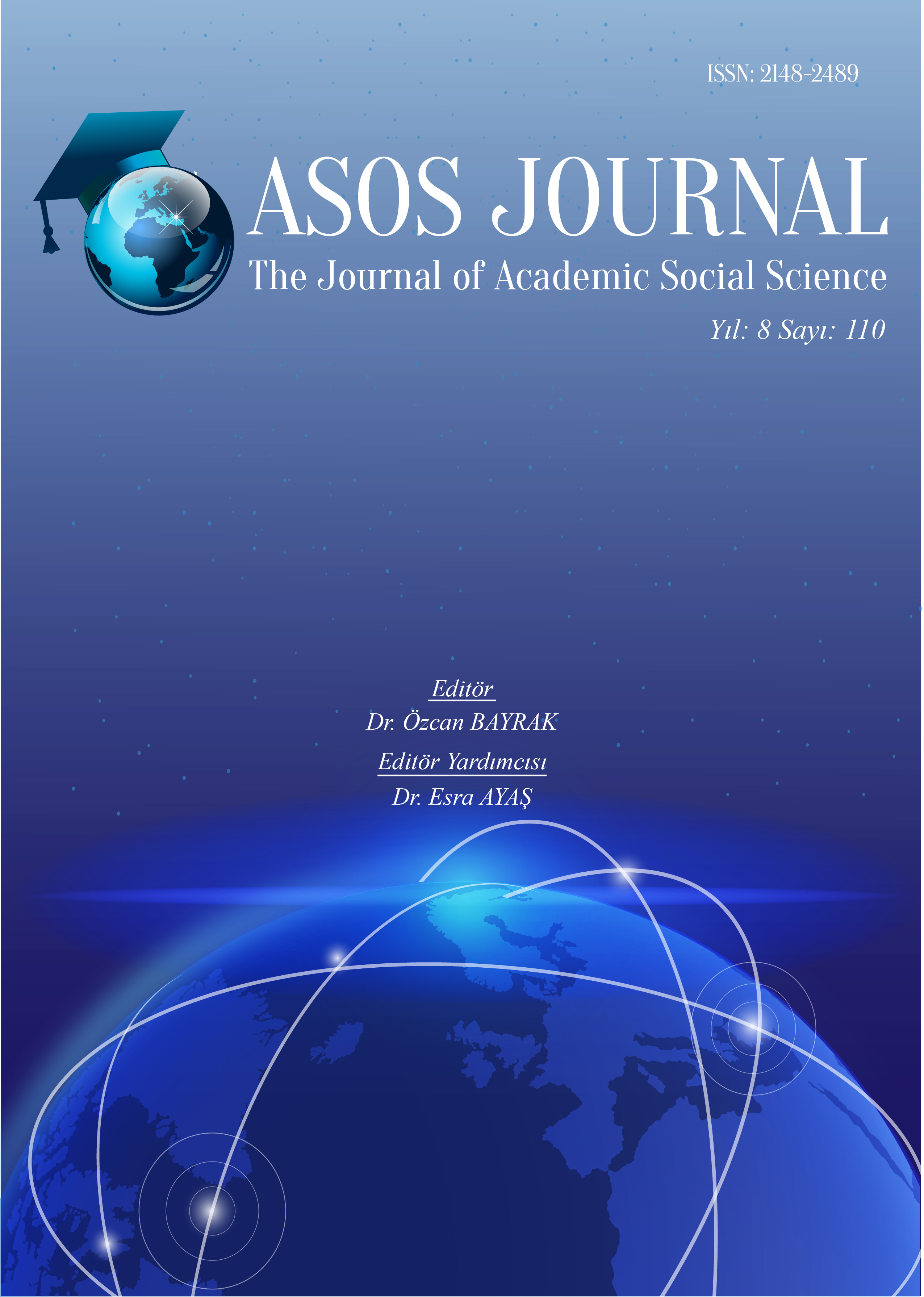Author :
Abstract
21.Yüzyıla girerken gelişmiş ülkelerdeki işletmelerde meydana gelen hile kaynaklı suistimallerin artması, kurumsal yönetim ile birlikte denetim uygulamalarının yeniden gözden geçirilmesini gündeme getirmiştir. Özellikle 1990’lı yıllardan itibaren, bütün menfaat sahiplerinin haklarını korumak ve daha şeffaf bir mali raporlama altyapısını oluşturmak üzere, işletmelerde risk temelli denetim yaklaşımı benimsenmiştir. Bu yaklaşım çerçevesinde birçok kanun yapıcı otorite yeni düzenlemelere gitmiştir. Türkiye’de 2011 yılında yürürlüğe giren 6102 Sayılı Türk Ticaret Kanunu (TTK) Dünya’daki gelişmelere paralel olarak şirketlerin yönetim yapılarında kurumsallığı teşvik eden bir anlayışı benimsemiştir. Bununla birlikte işletme yönetim kurulu altında yönetim uygulamalarını destekleyen yönetim komiteleri kurulmasını kapsamına almıştır. İşletmelerin daha şeffaf yönetilmesini sağlamak ve yönetim kurullarının sorumluluk anlayışı çerçevesinde tüm menfaat sahiplerine karşı hesap verebilirliğini güçlendirmek üzere oluşturulacak komitelerden en önemlisi Denetim Komitesi olarak karşımıza çıkmaktadır. Bu çalışma kapsamında bağımsız bir anlayışla oluşturulan denetim komitelerinin işletmelerde kurumsal yönetim gelişimine sağlayacağı katkılar anlatılmaya çalışılacaktır. Zira ekonomik kalkınmanın temeli daha yüksek standartlarda kurumsal yönetim anlayışına sahip işletmelerin arttırılmasını teşvik etmekten geçer.
Keywords
Abstract
Beginning with the 21st century, the increase of fraudulent misconduct in enterprises in developed countries brought to the agenda to review auditing practices together with corporate governance. Especially since the 1990s, a risk-based audit approach has been adopted in enterprises to protect the rights of all stakeholders and create a more transparent financial reporting infrastructure. Within the framework of this approach, many law-making authorities have made new regulations. 6102 Turkish Commercial Code (TTK), entered into force in Turkey in 2011, has adopted an approach that encourages the corporate issues of the management structure of the company in parallel with the developments in the world. However, the company included the establishment of management committees under the board of directors that support management practices. Audit Committee is the most important committee, which establishes a more transparent management of businesses and to strengthen the accountability of the board of directors to all stakeholders within the framework. Within the scope of this study, it will be tried to explain the contribution of the audit committees formed in an independent framework to the development of corporate governance in enterprises. Because, the basis of economic development is to encourage the increase of enterprises with higher standards of corporate governance.
Keywords
- Al‐Shaer, H. ve Zaman, M. (2018). Credibility of Sustainability Reports: The Contribution of Audit Committees. John Wiley & Sons Research Article. 1-14.
- Arens, A. A. vd. (2014). Auditing and Assurance Services. 16.Baskı. Pearson Yayınları
- Bavly Dan A. (1999). Corporate Governance and Accountability: What Role for the Regulator. Director and Auditor?.ABD: Greenwood Publishing Group.
- Boubaker, Sabri. (2014). Corporate Governance in Emerging Markets; Theories, Practices and Cases. Duc Khuong Nguyen Editors. İngiltere: Springer.
- Bozkurt, Nejat. (2018). Muhasebe Denetimi. Melisa Matbaacılık. 8.Baskı. İstanbul: Alfa Yayınları.
- Braıotta, Louis Jr. vd. (2010). The Audit Committee Handbook, 5. Baskı. Kanada: John Wiley & Sons.
- Chorafas, Dimitris N. (2009). IT Auditing and Sarbanes-Oxley Compliance Key Straties for Business Improvement. USA: Taylor and Francis Group.
- Coso. (2013). Comittee of Sponsoring Organizations of the Treadway Commission. Internal Control–Integrated Framework.
- https://www.coso.org/Pages/ic.aspx adresinden erişildi. (E.T. 25.09.2020). Coso. (2004). Enterprise Risk Management Integrated Framework.
- https://www.coso.org/Pages/erm-integratedframework.aspx | Executive Summary (English) adresinden erişildi. (E.T. 25.09.2020).
- Cadbury Raporu. (1992). The Financial Aspects of Corporate Governance. İngiltere.
- Çıtak, Nermin ve Selvi Y. (2013). Türk Ticaret Kanunu Kapsamında Kurumsal Yönetimin Küçük ve Orta Ölçekli İşletmelerde Uygulanabilirliği. İstanbul Üniversitesi İşletme Fakültesi İşletme İktisadı Enstitüsü Yönetim Dergisi. Sayı:74. 144-163.
- Drogalas, George vd. (2016). The Relationship Between Corporate Governance, Internal Audit And Audit Committee: Empirical Evidence From Greece. Virtus Interpress. Corporate Ownership & Control. Sayı 14/1. 569-577.
- Ghafran, C. ve O’Sullivan, N. (2012). The Governance Role of Audit Committees: Reviewing a Decade of Evidence. International Journal of Management Reviews. 1-27.
- Jackson, Peggy M. (2006). Sarbanes Oxley for Small Businesses – Leveraging Compliance for Maximum Advantage. ABD: John Wiley & Sons, Inc. Hoboken.
- Karasu, Rauf. (2013). 6102 Sayılı Türk Ticaret Kanunu İle Anonim Şirketlerde Kurumsal Yönetim İle İlgili Getirilen Yenilikler. İnönü Üniversitesi Hukuk Fakültesi Dergisi. Cilt: 4. Sayı:2. 33-60.
- Keasey, Kevin vd. (2005). Corporate Governance: Accountability, Enterprise and International Comparisons. İngiltere: John Wiley & Sons. Ltd.
- Lessambo, Felix I. (2014). The International Corporate Governance System, Audit Roles and Board Oversight. 2.Baskı. ABD: Palgrave Macmillan.
- Mıttsteın, Ira M. (1999). Introduction to the Report and Recommendations of the Blue Ribbon Committee on Improving the Effectiveness of Corporate Audit Committees. American Bar Association. The Business Lawyer. Sayı 54/3. 1057-1066.
- Moeller, Robert R. (2011). Coso Enterprise Risk Management: Establishing Effective Governance, Risk and Compliance Processes. Second Edition. Kanada: John Wiley & Sons Inc.
- Moeller, Robert R. (2004). Sarbanes-Oxley and the New Internal Auditing Rules. ABD: John Wiley & Sons, Inc.
- Oecd. (2004). Principles of Corporate Governance. Fransa.
- Pickett, K.H. Spencer. (2003). The Internal Auditing Handbook. Second Edition. İngiltere: John Wiley & Sons.
- Porter, B. vd. (2003). Principles of External Auditing. İngiltere: John Wiley&Sons.
- Report of the National Commission on Fraudulent Financial Reporting. (1987) https://www.coso.org/Documents/NCFFR.pdf adresinden erişildi. (E.T. 22.09.2020).
- Rezaee, Z. vd. (2003) Improving Corporate Governance: The Role of Audit Committee Disclosures. Managerial Auditing Journal. Sayı 18. No: 6/7. 530-537.
- Sarbanes Oxley Act. 30 Temmuz 2002. https://www.govinfo.gov/content/pkg/COMPS-1883/pdf/COMPS-1883.pdf adresinden erişildi. (E.T. 10.09.2020).
- Spira, Laura F. (2002) The Audit Comittee: Performing Corporate Governance. ABD: Kluwer Academic Publishers.
- Spk. Kurumsal Yönetim İlkeleri. Kurumsal Yönetim İlkelerinin Belirlenmesine ve Uygulanmasına İlişkin Tebliğ. Seri: IV. No: 56. Resmi Gazete No: 28158. Yürürlük Tarihi: 30.12.2011.
- Ttk. Türk Ticaret Kanunu Tasarısı. Sayı:B.02.0.KKG.0.10/102-1078/4903. http://www2.tbmm.gov.tr/d22/1/1-1138.pdf. adresinden erişildi. (E.T. 20.08.2020.)
- Türedi, H. (2011) Türk Kamu Mali Yönetiminin Yeniden Yapılandırılması: İç Kontrol. Yönetim ve Ekonomi Araştırmaları Dergisi. 99-127.
- Tüsiad. (2012) Kurumsal Yönetim En İyi Uygulama Kodu: Yönetim Kurulunun Yapısı ve İşleyişi. Yayın No. TÜSİAD-T/2002-12/226. https://www.tusiad.org/tr/yayinlar/raporlar/item/1877-kurumsal-yonetim-en-iyiuygulama-kodu--yonetim-kurulunun-yapisi-ve-isleyisi adresinden erişildi. (E.T. 25.09.2020)





